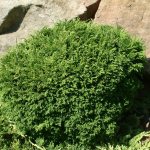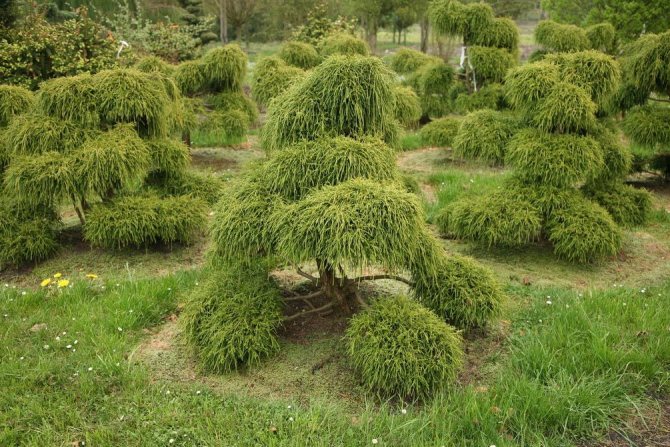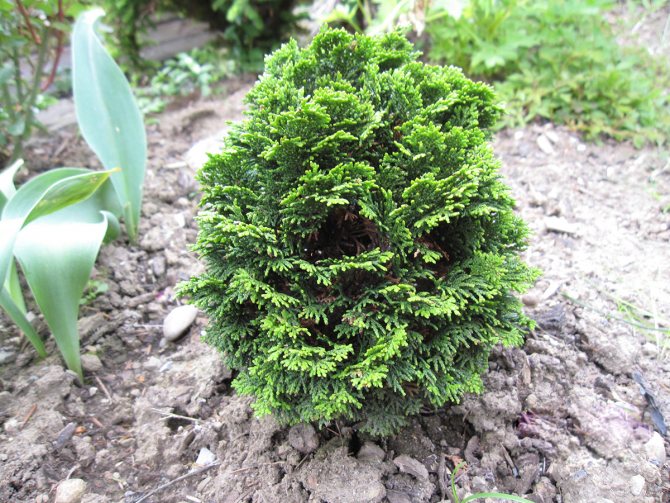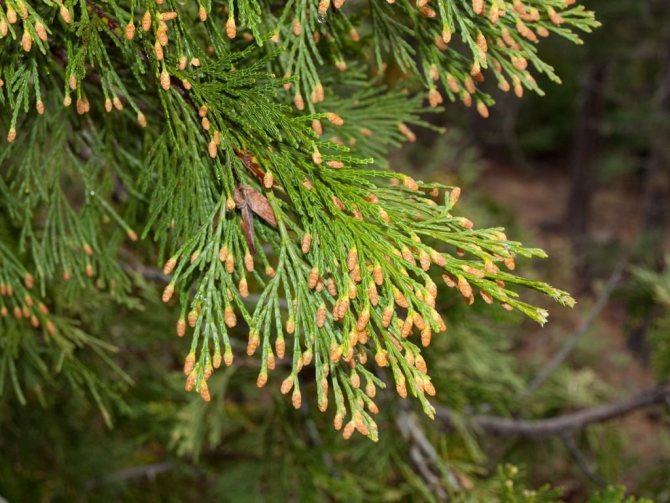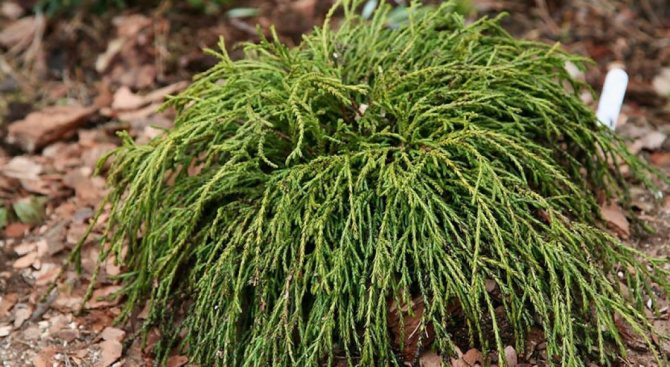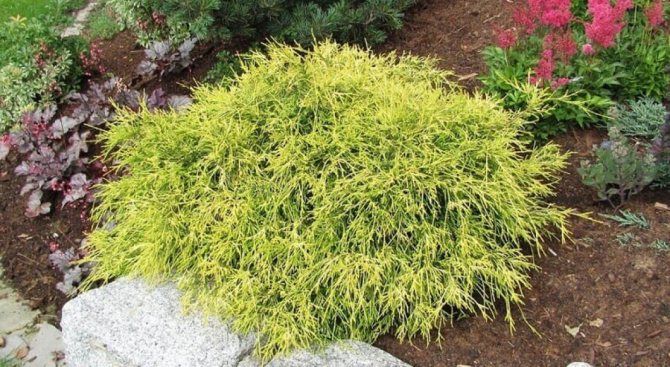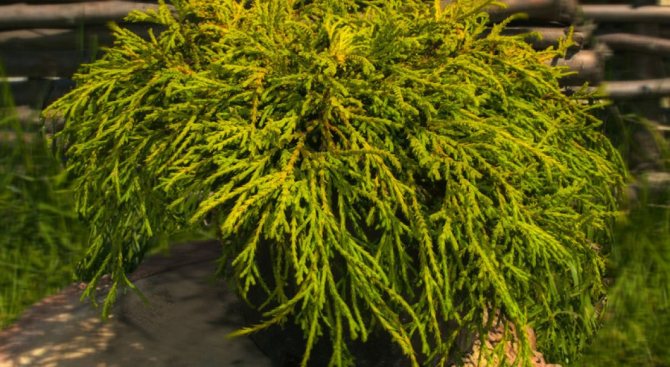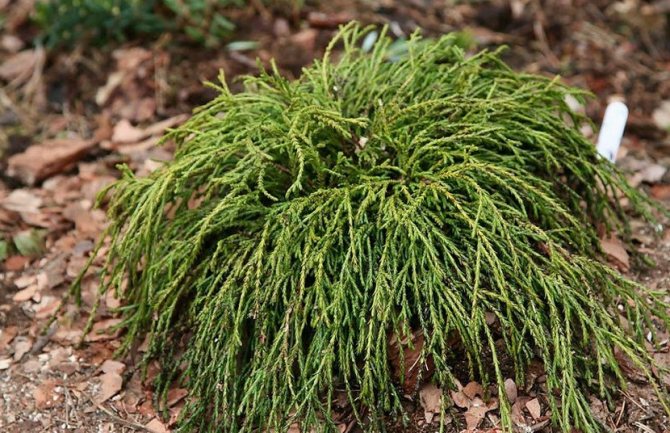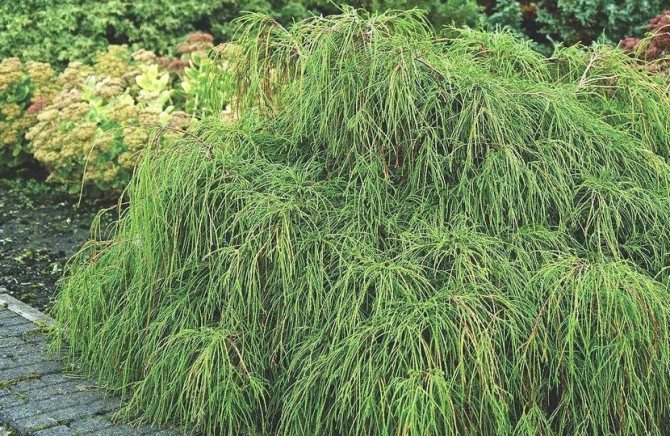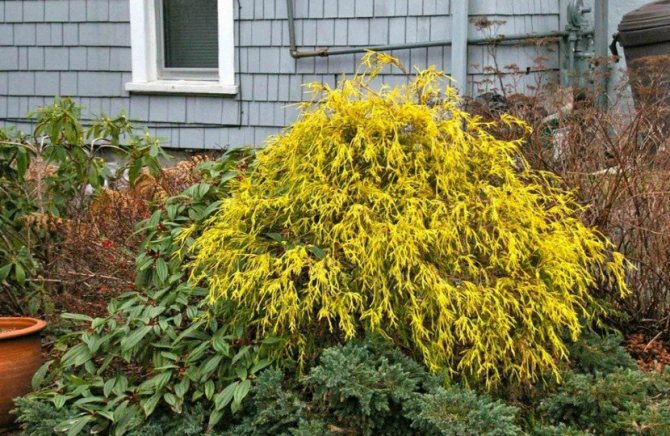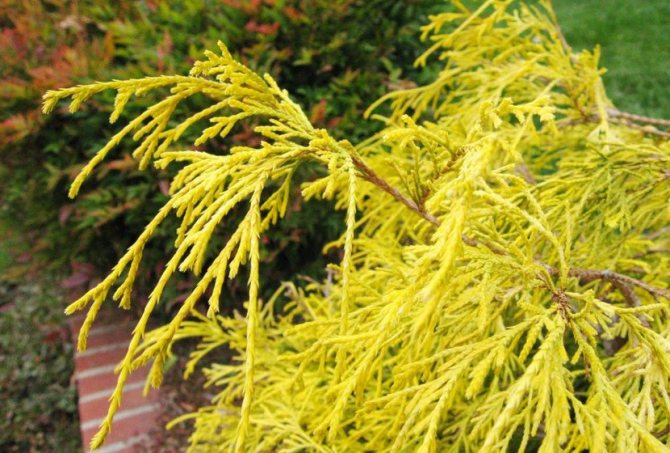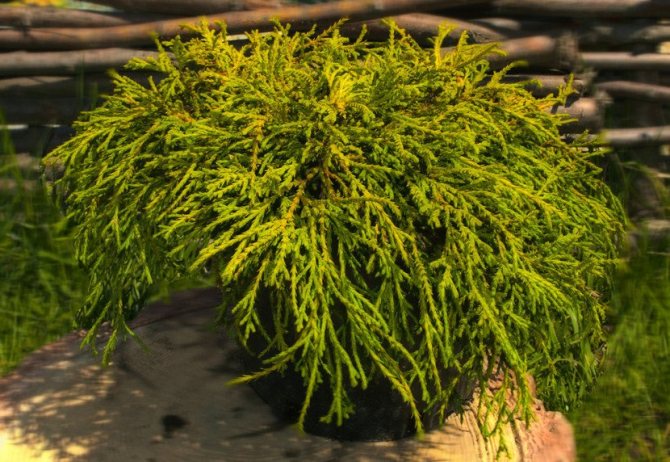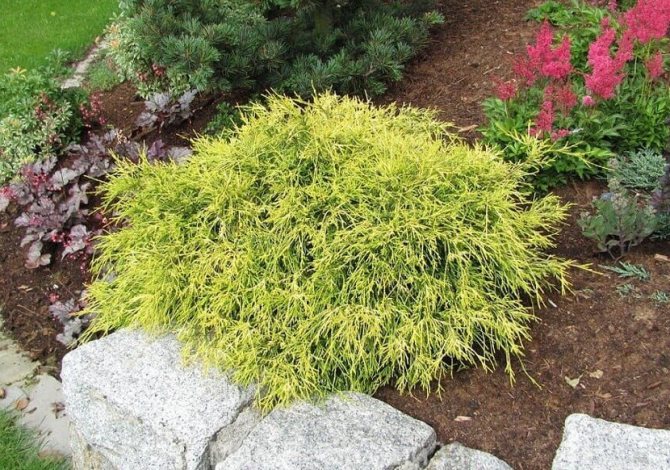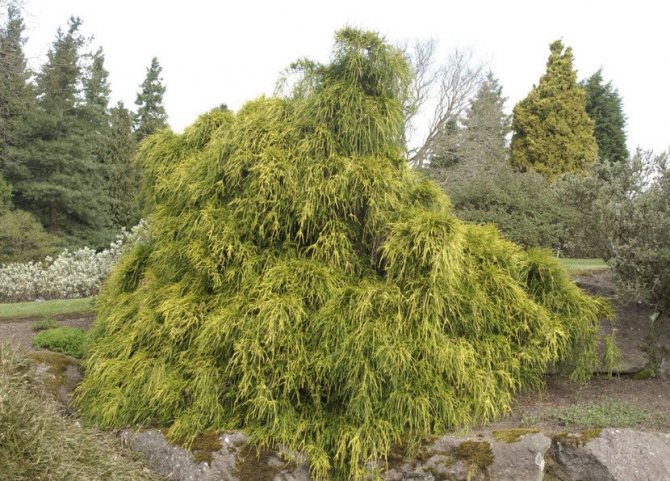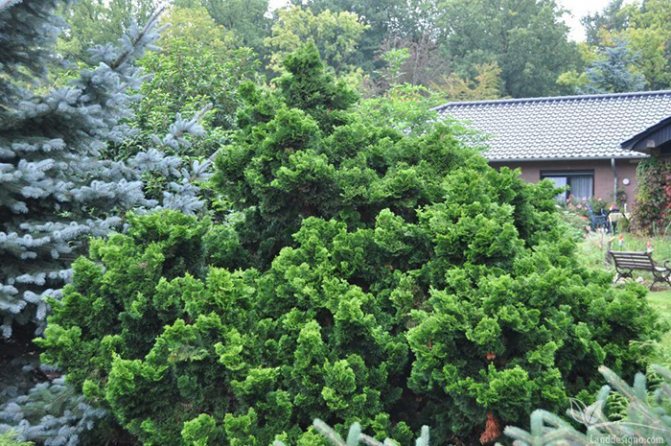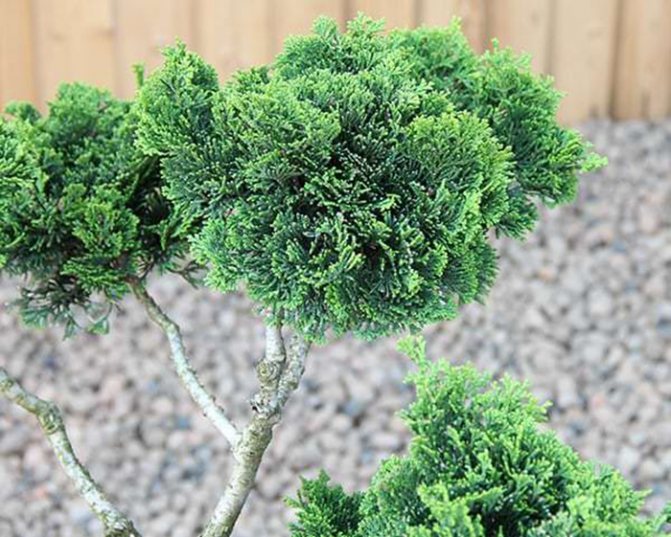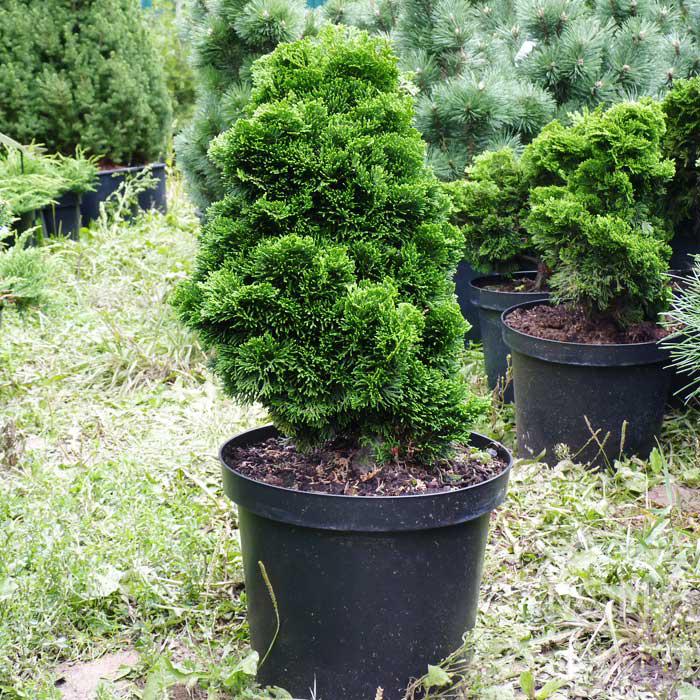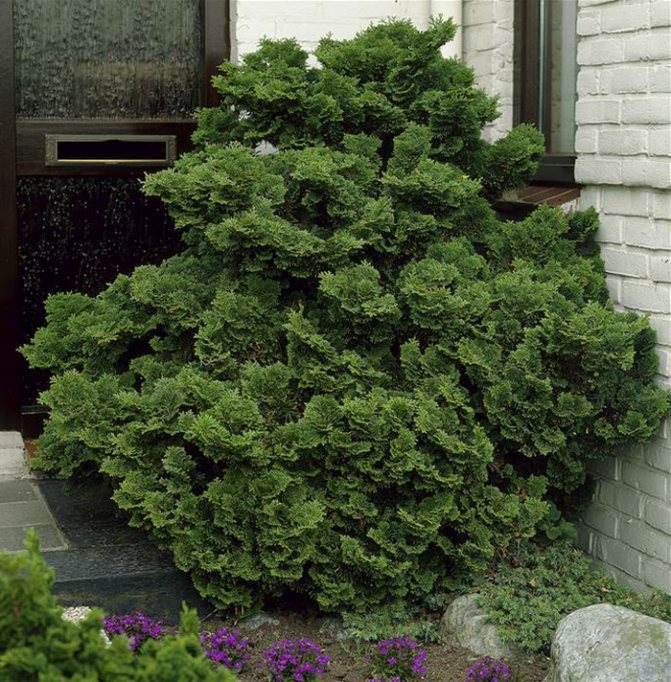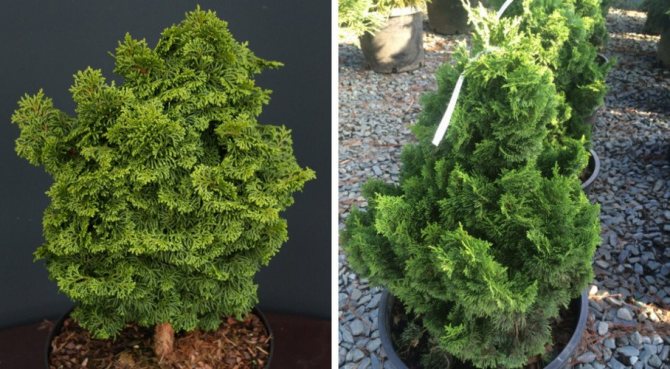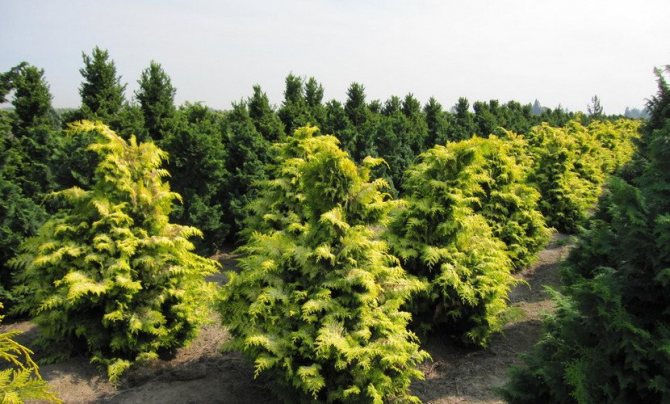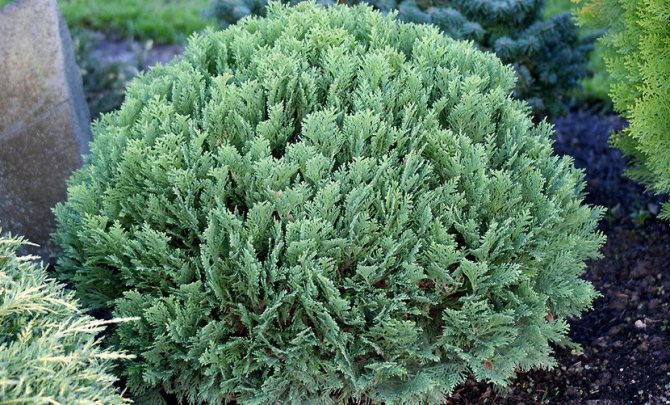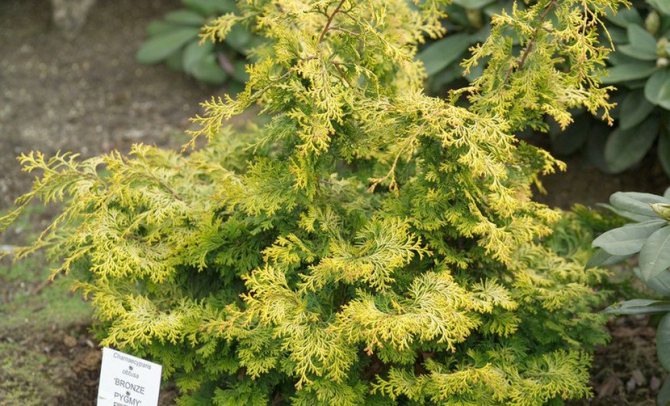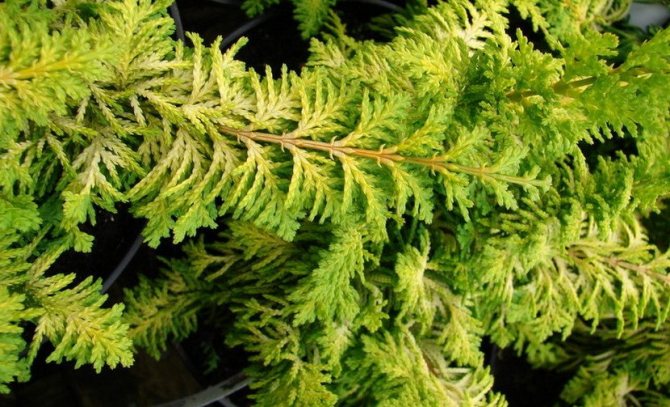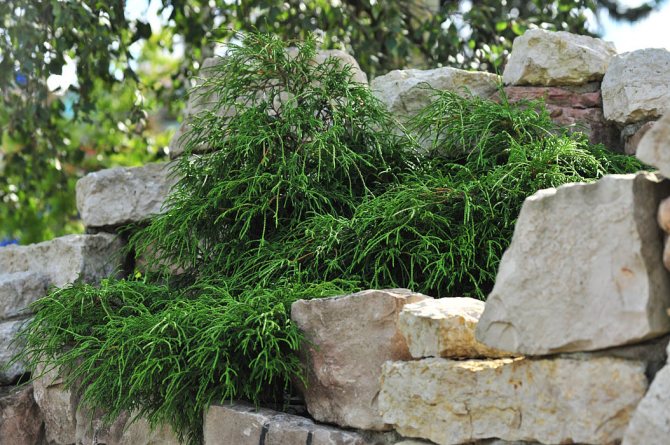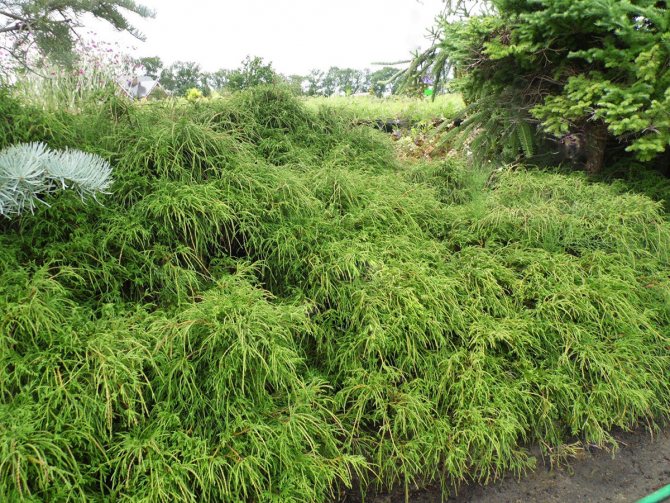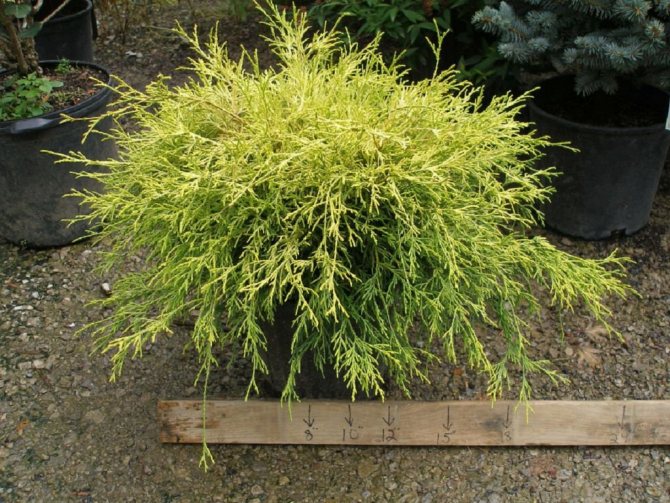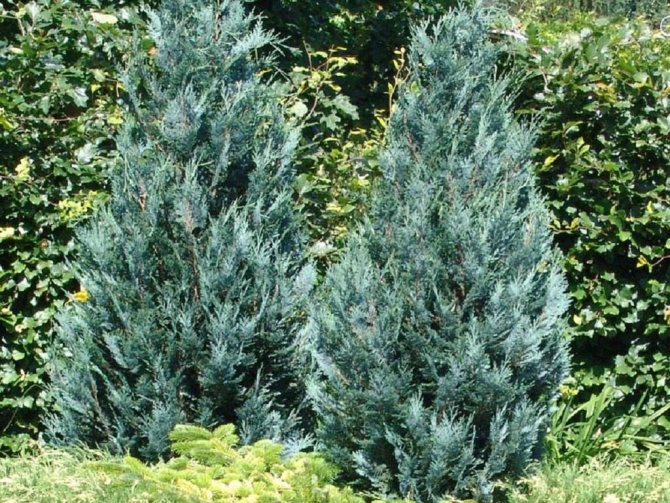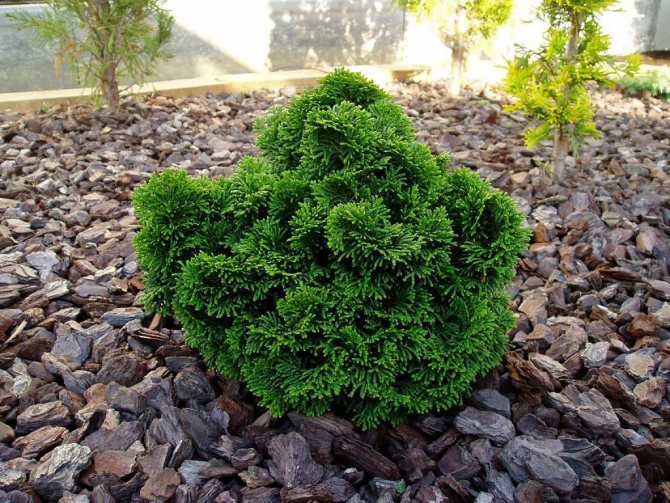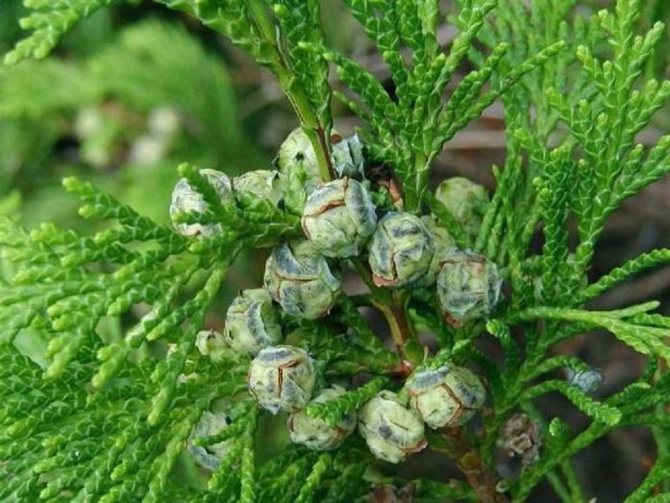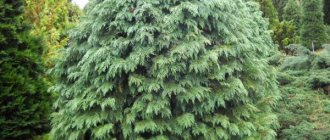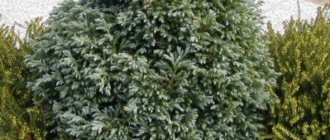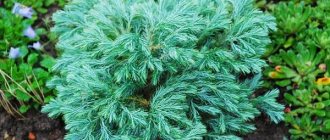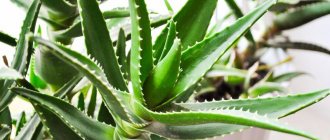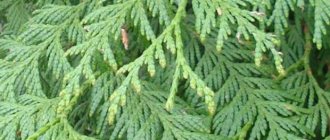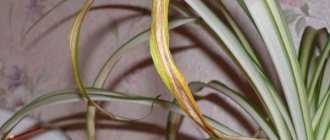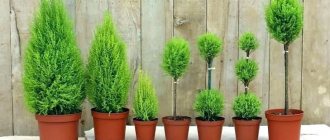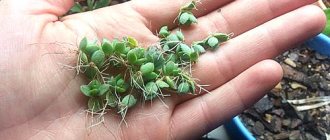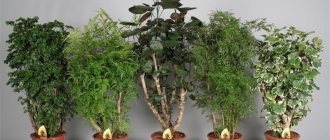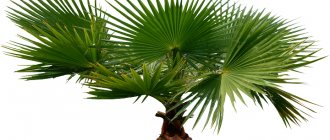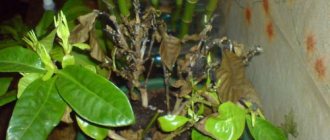Description of the plant
Dull cypress Nana Gracilis is a coniferous shrub with a very decorative crown. There are two types of plant foliage: conical and asymmetric. Exquisite shell-like shoots give it a charming look. The cypress tree has a bright color of needles that shine and shimmer in the sun. There are two types of needles: light green and dark green. This species can be classified as slowly growing, the adult dull cypress Nana reaches five meters.
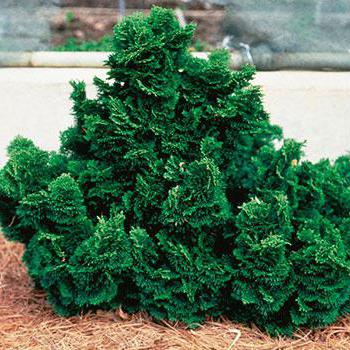
Cypress Nana Gracilis - photo
According to numerous reviews, the cypress Nana Gracilis is considered the brightest representative of this family. This plant is distinguished by its simply magnificent appearance, which is achieved by the unusual rolled needles, similar to shells. However, despite the exotic look, planting and caring for the crop is quite simple and can be done by any gardener.
Varieties and varieties
There are only seven species, three of which came from America and four from Asia. In Russian gardens, varieties of Japanese selection are most often found. Distinguish between dwarf, pyramidal and weeping varieties.
- Nutkansky is one of the interesting weeping species. Shrubs of this type grow slowly and endure frosty winters. If the winter period is cold and with little snow, then it is recommended to cover the cypress.
- Dull cypress Rashahiba is an evergreen shrub. Crohn's wide pyramidal shape. It grows up to 2 m in height. The plant has a very interesting color: from dark green in the middle to greenish-yellow and light yellow shoots. The growths are yellow at first, but turn green over time. The plant is suitable for fertile, drained soil of neutral acidity. The plant is best planted in a sunny place. Mandatory soil mulching. High frost resistance. Cypress looks great on personal plots.
- Lawson's cypress has many dwarf varieties and is widely known among gardeners. This species does not tolerate cold weather, so it is not easy to grow it in the middle lane.
- The pea cypress is a beautiful frost-resistant and unpretentious variety. The plant needs fertile soil and sun.
- The dull cypress Teddy Bia is a leisurely growing species with an asymmetrical crown shape, with a reddish-brown bark. The cypress reaches a height of 1.2 m. The crown is up to one meter in diameter. Scaly emerald needles with delicate green growths. The shrub resembles a teddy bear, which every time you pass by, you want to touch. Shoots look like a fern.
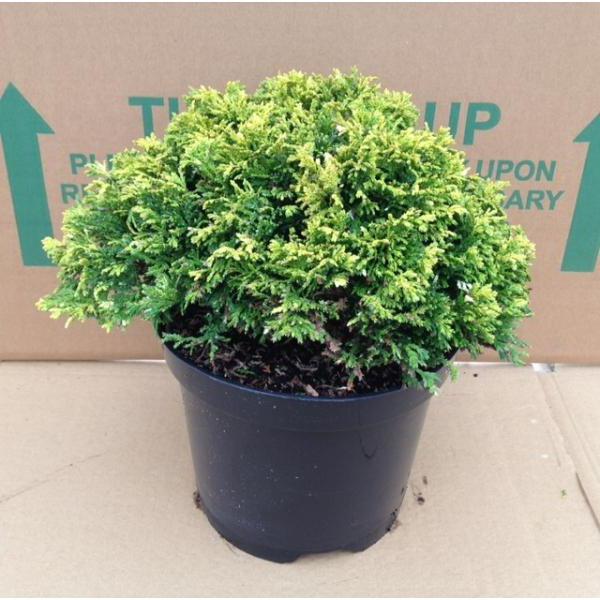

Use in landscaping
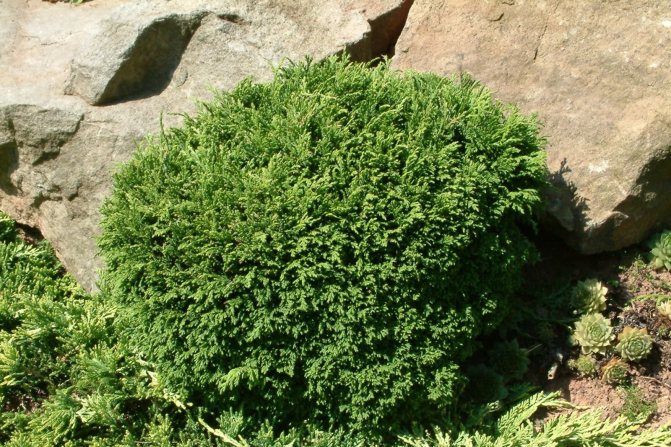

Description and characteristics:
- Pea cypress (lat. Chamaecyparis pisifera) - the most popular type of this coniferous plant. It can be grown in the garden and at home.
- Grows up to 2 m in height... Grows well in sunlit areas, not afraid of strong winds.
- Drought intolerant... For normal growth, the cypress needs moderate moisture.
- Cone conical... The crown shape is correct. Needles with a bluish tint.
- Many varieties of pea cypress are used in landscape design... They are used as a single planting, as well as in compositions for creating ridges, alpine slides, hedges.
- Hanging branches... They are densely covered with flat needles (leaves). The needles are flattened, on average 1.5 mm long.
- Grow well in fertile land... The soil on the site should be good for air and moisture. The plant does not tolerate stagnant water.
The author of the plot recommends growing the pea cypress, Filifera Nana. It is great for group plantings:
Dull cypress: planting and care
In the autumn, you need to dig a hole for the cypress. It is advisable to choose a place that is sunny, without drafts. A hole should be dug approximately 80–90 cm deep and 60 cm wide. Drainage is installed at the bottom, the plant does not like stagnant water near the roots. Expanded clay, chipped bricks, stones are suitable for the drainage system. The recommended layer is 20 cm.
In the spring, the pit must be filled about half with nutrient soil. In general, plants grow best in fertile soils. For this reason, a mixture of humus, peat and sand must be present in the pit. Add mineral fertilizers and compost before planting. Next, the cypress is placed in a pit and sprinkled with earth. Mulch with straw, sawdust or peat, creating a layer about 7 cm thick, watered. Mulch retains moisture in the soil and also inhibits the growth of weeds.
What is the main thing in care
This plant is very moisture-loving, and therefore the main thing in care is to keep the soil moist. Water the cypress often, up to two to three times a week. When watering, it is enough to pour a bucket of water under each plant. Also, the cypress should be constantly sprayed or watered from above with a diffused stream.
Mulching
Mulch will greatly facilitate the care of the plant - you will not need to water so often and constantly break through the weeds. You can mulch with sawdust, peat, lawn mowed grass. The thickness of the mulch layer must be at least 7 cm.
Frost protection
For the winter, plants, especially young ones, need shelter. A thick layer of mulch and spruce branches will save from freezing of surface roots and lower branches. Adult plants should be tied up and wrapped in spruce branches before winter. Although adult specimens can withstand cold snaps without shelter, it is still better to "hide" the cypress from frost.
In mid-April, the shelter can already be removed. After winter, dried branches are removed from the tree, the damage on the bark is covered with garden pitch. As soon as the soil thaws, the trees must be well watered and fed with complex mineral fertilizer.
Fertilization
In the spring, the cypress will gratefully accept fertilizing with fertilizers that contain nitrogen. You can simply sprinkle the fertilizer pellets around the bushes.
Reproduction
The blunt cypress reproduces in three ways - by seeds, layering, cuttings. The most common way is the latter.
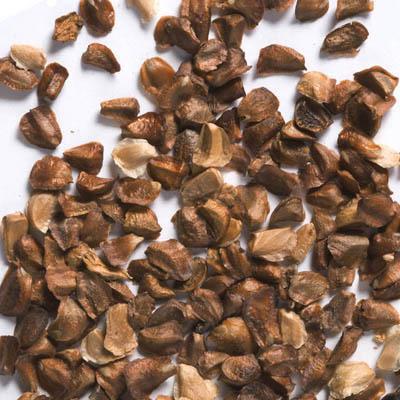

- Professional breeders use seeds as a breeding tool. They are harvested in the fall and dried at + 40 ° C. Cypress seeds are stored at + 5 ° C. They can maintain their germination capacity for up to 15 years. Stratification is needed to awaken seeds. For this, cypress seeds are sown in a container with a mixture of sand and peat. If cypress trees are planted in December, they should emerge by early April. The container with the seeds is placed in the basement for three months, then rearranged into a bright room in which the air temperature is maintained at + 18 ° C. The soil in the containers should be moistened, and when the first shoots appear, they are moderately watered. In the spring, when the soil and air warms up, the sprouts should be transplanted to a shaded place on the site.
- Reproduction by layering. They are formed in the usual way - the lower branches of the plant are bent to the ground and added dropwise at the beginning of spring. On the shoots where the buds are located, it is necessary to make incisions for the rapid emergence of roots. The upper part of the layering is tied to a peg. Starting next spring, the cypress tree can be separated from the bush and transplanted to a new location.
- Propagation by cuttings is the easiest and most reliable way.Cut the tops of the shoots with a length of at least 15 cm. Then remove the needles from the bottom and put the cuttings in a container enriched with a nutrient medium. For fast rooting, they create a greenhouse effect: they cover the containers with a covering material or plastic wrap and constantly moisten the substrate. Cuttings are recommended in the spring, and in the fall they can already be transplanted into the garden. In the first winter, so that the cold does not damage the roots, it is recommended to cover the plant with fallen leaves.
Care
Caring for a cypress tree does not imply any particular difficulties, but you should still stop at some points - watering, fertilizing, pest control and shelter for the winter.
We recommend that you learn how to plant a cypress tree in open ground.
Watering and feeding
Especially care should be taken to water in the first 2 years of growing and during extended periods of drought, which is very dangerous for young plants with a fragile and shallow root system. As for the irrigation rate, it is better to water once and well than often and sparingly. Frequent and low watering causes the plants to become shallow because they find moisture in the upper parts of the soil.
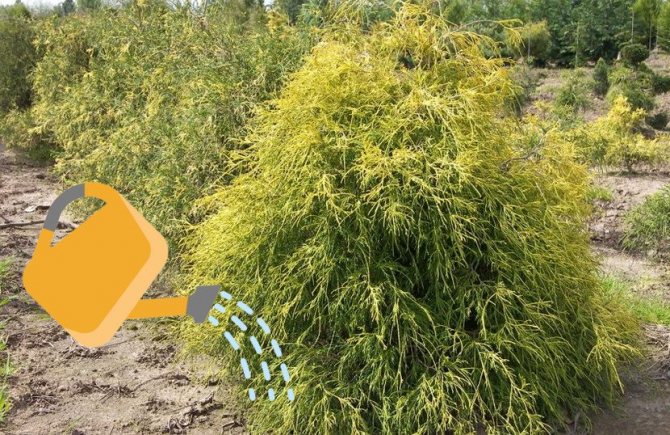

Watering should be abundant so that the water reaches the deep layers of the soil, then the cypress will take root deeper. As a result, drought tolerance develops, and in later years the plants do not need to be watered outside of periods of drought, and they are able to remain without water longer.
Adult cypress trees are watered only during dry periods when the topsoil dries out to a depth of 20 cm. The culture responds well to sprinkling. But not only in hot weather, but also in spring, plants may lack water, especially when they grow on light soil or on rocky ground. In the southern regions with little snow and not frosty winters, the cypress tree can also be watered in winter, since the photosynthesis of coniferous crops continues during these periods, only it proceeds more slowly.
Important! Avoid fertilizing on hot days and immediately after planting. To prevent a chemical burn of the roots, observe the dilution rates and the uniformity of application of drugs in the root zone.
Every year the cypress should be fed with nutrients 2-3 times in the spring (preferably with a universal fertilizer for conifers), and in the fall with special autumn fertilizers. For young plants, mulching with compost is sufficient.
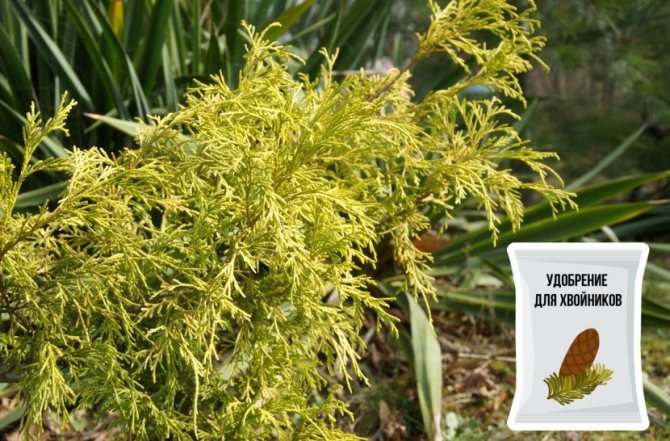

Loosening and mulching
Loosening of the trunks is necessary to saturate the roots with oxygen and ensure the air permeability of the soil. This procedure is especially necessary after watering in order to avoid the formation of a crust on the surface of the soil. The depth of loosening depends on the age of the plant and is 10–20 cm.
Mulching with a layer of 5–10 cm eliminates loosening after watering, retains moisture in the soil, regulates soil temperature and inhibits weed growth. Peat, straw, wood chips, compost, sawdust, pine needles, fine bark, cones - any loose and air-permeable material are suitable as mulch.
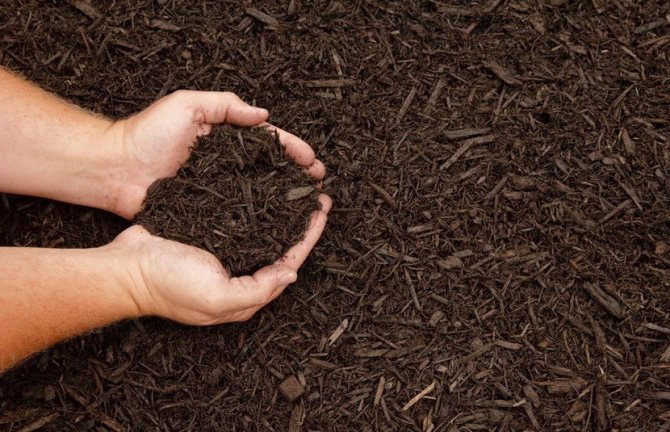

Pruning
Cypress tolerates spring pruning well before new shoots appear. At the same time, broken, poorly formed and frost-damaged branches are removed, the plant is cleaned of dry seed bolls. In hedges, pruning limits the height and size of the bushes.
Did you know? The oldest known cypress tree is about 4000 years old. It has its own name (Sarv-e-Abarku) and grows in Iran.
To create the correct shapes (a dense ball or dome), formative pruning of young shoots is carried out, removing only a third of the green mass at a time. In young plants, the central conductor is removed to ensure a rounded shape. Thick branches of old wood should not be shortened as this weakens and disfigures the plants, destroying their unique appearance.
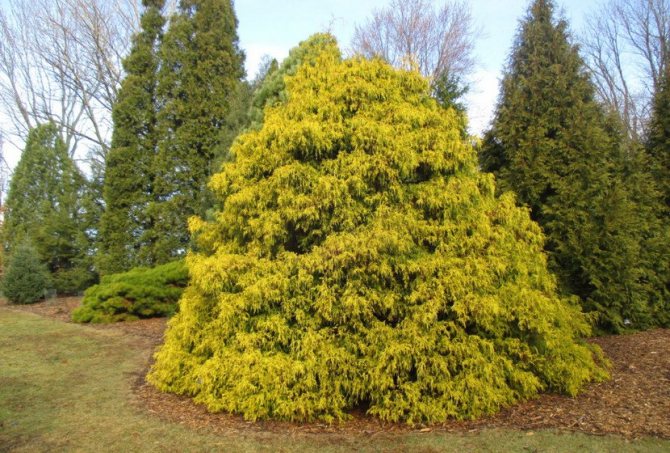

Wintering
Cypress Filifera Aurea Nana loves warmth and moisture, therefore, in regions with harsh climatic conditions, it should be sheltered for the winter. The main factors that can damage the plant are bright winter sun, chilly winds, heavy snow cover and icing.
We recommend that you familiarize yourself with the blunt cypress of the Teddy Beer variety.
This can lead to sunburn and cold burns, creating unattractive yellow-brown foliage for most of the winter, dehydration of needles, damage to branches and deformation of the trunk. Winter thaws, followed by frost, can cause cracking of the bark, which degrades the appearance and opens the door for infections.
Suitable material for shelter:
- spruce branches;
- cotton fabric;
- sackcloth;
- agrofiber;
- agrotherm;
- lutrasil;
- spunbond;
- kraft paper.
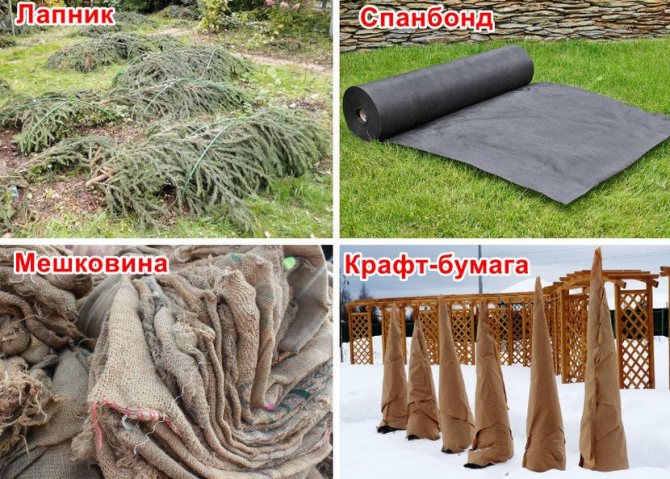

It is especially important to shelter young plants for the first 3-4 years - they can be covered with wooden boxes, and insulated with material on top. Not only the upper part of the plant and the needles need protection from the cold, but the root system can also suffer from severe frosts when the ground freezes at the base of the tree. Mulching with a layer of 10-15 cm of trunk circles will help to avoid this.
Possible diseases and pests
Cypress is resistant to most diseases and is not affected by pests, but under adverse weather conditions, violation of the rules of care, weakened plants become susceptible to fungi that cause root rot. So it is worth taking care of this and monitoring moderate soil moisture and avoiding stagnant water in the root system zone.
Hedge specimens can be affected by gray molds caused by pathogens. If a disease is detected, all infected plants should be sprayed with fungicides twice, every 10-14 days. The rapid growth of the disease is facilitated by the high density of planting and high humidity at a temperature of + 20 ... + 25 ° С, therefore, when watering, it is necessary to avoid getting tree branches wet.
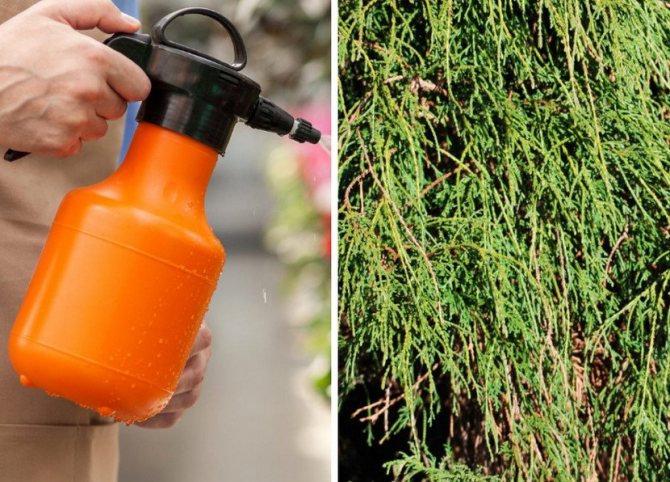

Sanitary pruning of affected areas or removal of adjacent plantings to ensure air and light transmission will help in the fight against lesions, since in dense plantings without proper airflow, diseases can easily spread from tree to tree. In the most extreme cases, the only solution is to remove the whole plant.
To strengthen trees and increase disease resistance, fertilize them with ammonium nitrate, ammonium sulfate, or coniferous fertilizer.
Important! Conifers require lower fertilization rates (about half) than garden crops, so check the doses and frequency of fertilizing with specialists
.
Among pests, aphids, spider mites and scale insects that feed on plant juices are especially dangerous. This leads to wilting, yellowing and dropping of the needles. To combat, you should use special chemicals designed for such lesions.
Pruning
This procedure must be done in the spring-autumn period. In the spring, as soon as the snow melts, dry and frozen branches of needles are removed, pruning is done, cutting off no more than a third of the entire green mass of the plant. Sections are made obliquely with sharp and clean instruments. As a rule, cypress trees are given a cone-shaped appearance. Freshly planted plants are not pruned. The first pruning can be done one year after planting. For the density and splendor of the crown in autumn, at the end of the growing season, a third of the total growth is cut off. In addition, all bare branches should be removed as they will dry out.
Despite the fact that cypress trees are quite undemanding plants, for their safe cultivation, you must adhere to the basic rules of care. As soon as a new dull cypress Nana is planted, it needs to be fed.
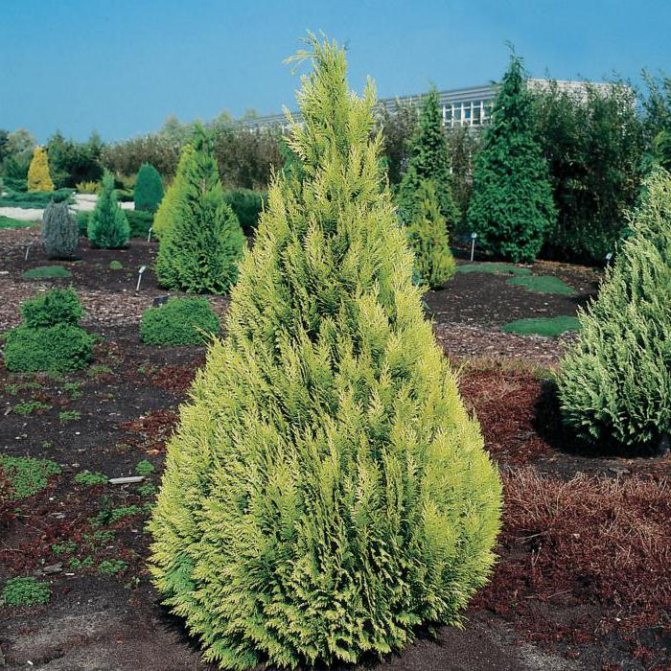

Cypress in the house
Bonsai and shrubs can be planted in a pot to decorate the room.At home, the cypress must ensure high humidity and regular watering. The optimum temperature throughout the year is + 20 ... + 25 ° C.
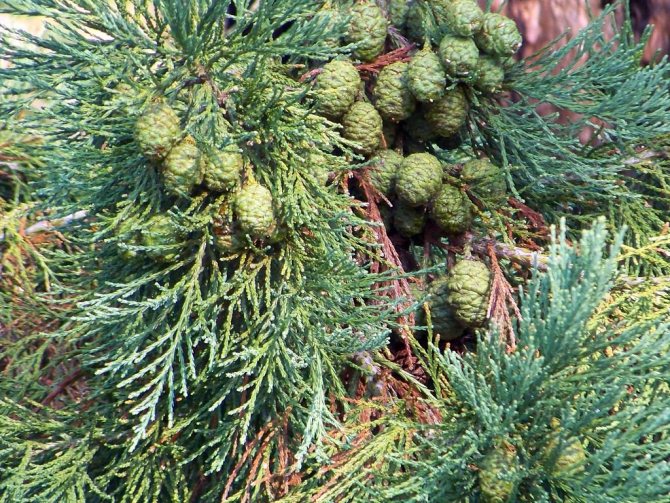

The rhizome develops quickly and requires free space, so the plants are transplanted every 1-3 years, gradually increasing the pot to a large tub.
Pests and diseases
The blunt cypress is rarely attacked by pests and practically does not get sick. However, sometimes troubles can still appear. As a rule, the scabbard and spider mite harm the shrub. If the plant turns yellow and the needles begin to fall off, then, most likely, a spider mite has started. The drug "Nuprid" will help to cope with this problem. Mature plants are treated once a week. And acaricides can also help.
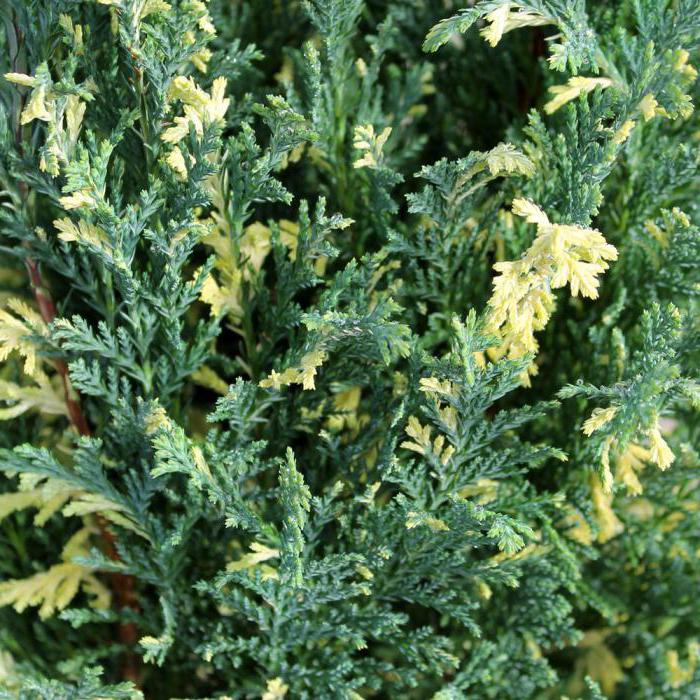

Most of all shrubs are affected by root rot. The fungus can appear due to the wrong content or excess moisture. Therefore, you do not need to pour too much water, and when planting, be sure to install a drain. If the shrub is spoiled by root rot, then the plant must be destroyed. If you see the fungus at an early stage, then you need to dig up the shrub, cut off the damaged roots and treat them with a fungicide. It is recommended to sprinkle the root system with charcoal. Then dry the wounds in the air, and then plant the cypress in another place, observing the planting technology.
Growing
Agrotechnics
Prefers fertile soils. Photophilous. Winter-hardy.
Reproduction
Varieties
At present, many cultivars have been described, but in Russia they have practically not been tested.
Some low-growing forms may turn out to be promising: “Denza” (at 35 years old, height 0.6 m), “Hage” (height about 1 m), “Intermedia” (height up to 30 cm), “Pygmea” (height up to 1.5 m) and others.
blunt cypress tetragona aurea
Blunt cypress BRONZE PYGMY Chamaecyparis obtusa BRONZE
Popular variety Pygmaea, slow-growing, flat-spherical shape, at the age of 10 years reaches approx. 0.5 m in height. and up to 1 m wide. Shoots are loose, fan-shaped, lemon-yellow in summer, brown in winter. Fertile and moist soils are required. Especially effective for alpine slides and rock gardens. zone 6B
Dull cypress CHABO-YADORI Chamaecyparis obtusa CHABO-YADORI
The variety is rather fast-growing, conical, usually of irregular shape. Reaches 10 years old. 1 m height. Shoots are irregularly branched, slightly drooping, mostly covered with needle-like needles, partly with green and blue scales. Recommended for fertile and moist soils. For planting in Japanese gardens and compositions. zone 6B
Dull cypress CONTORTA Chamaecyparis obtusa CONTORTA
The shrub is rather slow-growing, of irregular conical shape. Reaches at the age of 10 approx. 0.6 m in height. and 0.8 m wide. Shoots are short, strongly twisted, dark green. Needs fertile and moist soils. Recommended for Japanese gardens and alpine slides .. zone 6B
Dull cypress CORALLIFORMIS Chamaecyparis obtuse CORALLIFORMIS
A dwarf, slow-growing pyramidal variety, at the age of 10 years reaches approx. 0.7 m in height. Shoots are hard, twisted, cordlike, openwork. The needles are dark green. Needs fertile and moist soils. Recommended for alpine slides, Japanese gardens and rock gardens. zone 6B
Description of the variety
Dull cypress (dull-leaved) grows in the mountains, on the Japanese islands and in East Asia. The cultivation of ephedra began in Japan, from where in the 18th century the plant moved to Europe and the USA.
Chamaecyparis obtuse ‚Nana Gracilis grows slowly, increasing in size by 5-7 cm per year. The maximum height of a cypress is 2.5 m, with a bush width of 1.5–1.8 m.
The shape of the bush is irregular. It can be ovoid, spherical, in the form of a pyramid with a wide base. The plant responds well to a haircut, it can be given an original appearance.
Short, flat and wide branches are densely located on the trunk. The plane of each shoot bends, taking the shape of a funnel.This structure of the shoots gives the ephedra splendor. The bark on the shoots and trunk is smooth, red-brown in color.
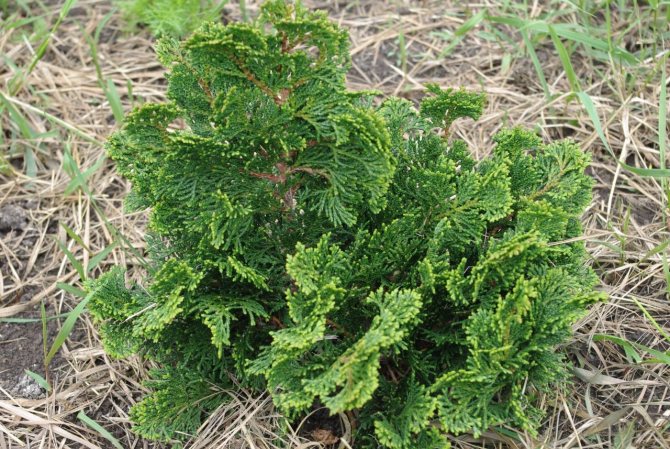

Short, flat and wide branches are densely located on the trunk.
The needles of the cypress tree Nana Gracilis are short (up to 2 cm in length), scaly, soft to the touch. The color of the needles is bright green, they can change color, depending on the location of the tree. In the shade, the needles take on a dark emerald hue, in the light it brightens, becoming light green or light green.
In autumn, medium-sized brown cones with winged seeds ripen on a perennial.
K Cypress dull CRIPPSII Chamaecyparis obtusa CRIPPSII
Growth rate is average, cone-shaped, at the age of 10 years reaches approx. 1.5 m in height. The branches are delicate, fern-like, golden yellow. Needs fertile and moist soil. Recommended for Japanese gardens and single plantings. zone 6B
K. dull aurora - Chamaecyparis obtusa K. dull gitte - Chamaecyparis obtusa K. dull gracilis - Chamaecyparis obtusa K. dull dracht - Chamaecyparis obtusa K. dull kamarachiba - Chamaecyparis obtusa K.
Nana Gracilis Nana Gracilis - Chamaecyparis obtusa Nana Gracilis
.A graceful dwarf coniferous plant, which at a young age has a rounded crown, later a wide-round one. Shoots are horizontal, most of them are low from the ground. The branches are unevenly distributed, rather densely. It grows slowly. Annual growth is up to 5 cm in height and up to 3 cm in spread. An adult plant has a height of about 3 m and a crown diameter of up to 1.5 m. The needles are evergreen, scaly, dense, dark green, shiny. The roots are strong, widely spread over the surface.
The soil prefers fertile, moist, sensitive to soil compaction and drought air. Prefers partial shade or shade. One of the most frequently cultivated forms that appeared in Western Europe in the middle of the 20th century.
K. stupid rashahiba - Chamaecyparis obtusa K. stupid tatsumi - Chamaecyparis obtusa K. stupid tatsumi gold - Chamaecyparis obtusa K. stupid teddy - Chamaecyparis obtusa K. stupid teddy bearaupa - Chamaecyus obtus K. - Chamaecyparis obtusa
Landing
First, it is worth choosing an area for growing vegetation. This species does not tolerate strong shading and abundant sunlight. The ideal option is partial shade. It is also worth paying attention to the location of the groundwater. They should not be closer than 1.5 m from the soil level.
Important! Variety Filifera Nana can also be grown at home in a pot. But to ensure the required level of lighting, it will be necessary to equip the room with Bio lamps.
Site preparation is standard, as for all plants:
- digging to a depth of 30 cm;
- spraying with a solution of copper sulfate of 3% concentration;
- a week later, re-digging to a depth of 20 cm with preliminary introduction of 10 kg of compost, deciduous humus, peat with sand (1: 1) for each m².
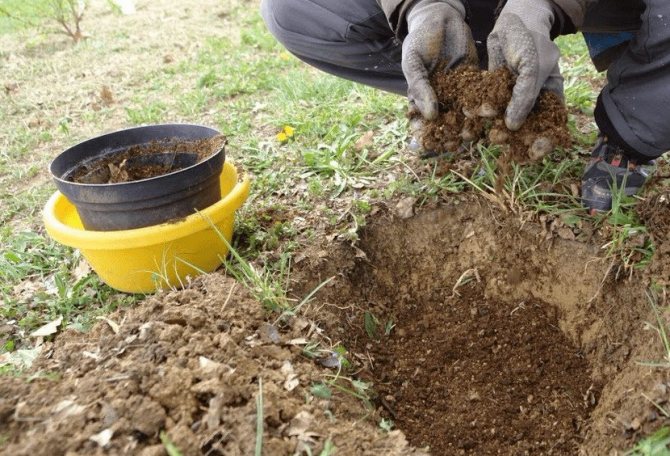

In the spring, a week before planting, the soil on the site will again need to be loosened to a depth of about 10 cm. Planting should be carried out in April, when a stable above-zero temperature is established.
Important! When planting the cypress variety Filifer Nana, you should not shake the earthen lump in which they are located from the roots. Otherwise, it will be more difficult for the plant to take root, in addition, there is a risk of damage to the thin root processes.
Description of the landing stages:
- A week before planting, dig a hole 90 cm deep, the width should be 2 times the root system. When planting several specimens, a distance of at least 1 m is left between the holes.
- Immediately before planting on the bottom of the pit, lay a layer of drainage 15 cm, then a layer of soil from the pit, mixed with compost 1: 1. Drizzle with hot water (+ 50 ° С).
- Once the liquid has been absorbed, form a hill in the center of the well. Place a plant on it.
- Align along the root collar - it should rise 5 cm above the ground level. Fill the voids with soil.
- Seal the trunk circle, then pour 10 liters of water at room temperature.
- When the moisture is absorbed, carry out mulching - mix peat with sawdust 1: 1 and lay the mixture around the trunk in a layer of 5 cm.

